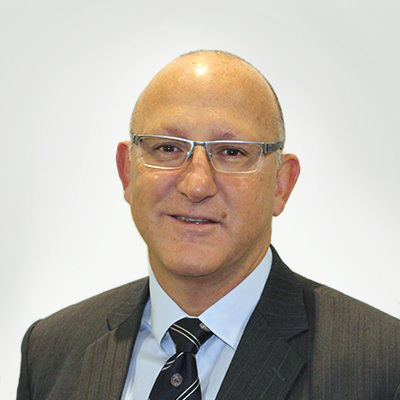Bunion surgery is used for people who are experiencing difficulty walking, continuous pain, or bothersome deformities of their great toe. It is usually undertaken after non-surgical methods have been tried and failed or if the foot deformity has reached a point where it is interfering with daily function. Although not all bunions need to be operated on, you may choose to undergo the procedure if you experience the following symptoms:
- Inflammation of the big toe and swelling of the area that does not improve with rest or medications
- Toe deformity especially when the big toe begins to overlap the second or third toe
- Failure of non-surgical options to control pain such as anti-inflammatory drugs (ibuprofen) and changes to footwear
- Inability to bend or straighten the big toe
Before undergoing any surgical procedure, it is important to discuss your condition and circumstances with an orthopaedic specialist surgeon.
Please read our article on Bunions for more information about this condition.
How is the surgery performed?
A combination of surgical techniques is used to correct a bunion depending on how much the bones of the big toe are misaligned. The overall goal is to realign the main joint of the big toe (known as the metatarsophalangeal joint or MTP joint), repair the tendons and ligaments of the big toe and foot, and remove any damaged or inflamed tissue.
In most cases, ligaments need to be corrected by tightening or loosening them, so they do not cause the big toe to drift towards the other toes.
The orthopaedic specialist surgeon may also remove some of the bone of the big toe to correct its shape with a procedure called an osteotomy. In most cases, only a small wedge is removed and then the bone is fixed in place with pins, screws, or plates. Osteotomy is done in combination with ligament correction to maintain the big toe shape and alignment.
If there is arthritis of the joint, the orthopaedic specialist surgeon may use a technique called arthrodesis which involves removing arthritic joint surfaces and fusing the bones of the big toe together. However, this procedure is only reserved for those who have severe cases of bunions affected by arthritis or when bunion surgery has previously failed.
The orthopaedic specialist surgeon may directly remove the offending big toe bump with a procedure called an exostectomy. This procedure may relieve symptoms of pain but does not correct the underlying big toe deformity issue. It may be used in conjunction with other surgical techniques to correct a bunion.
How long will I be in hospital?
Bunion surgery is usually done as an overnight surgery. You will expect to spend at least one night in hospital after the surgery.
Will there be pain involved?
Prior to surgery, you will be given a local injection around the foot area called ankle block anaesthesia, so you remain pain-free during and after the surgery. Depending on your case, other types of nerve blocking anaesthesia may be used including regional anaesthesia that numb the areas below the knee or spinal anaesthesia that numbs the body below the waist. You may choose to undergo the procedure under general anaesthetic, but your orthopaedic specialist surgeon will discuss these options with you well before the day of surgery.
During the recovery period, you may be prescribed some stronger painkillers to reduce any discomforts. In the recovery and rehabilitation period, you may experience some discomforts, but this can be managed with painkillers.
What happens after the surgery?
After the procedure is complete, the orthopaedic specialist surgeon will insert metal pins to hold the toes in alignment and bandage your foot to hold the bones in their newly aligned place and protect the surgical wounds while they are healing.
Afterwards you will be sent to the recovery unit and monitored for a period of time to allow the anaesthesia to wear off and your body vitals to normalise. It is important at this time to report any discomfort, pain, or nausea you may have to the doctors as they can assess your need for painkillers or anti-nausea drugs when you are discharged.
You will be referred to a physiotherapist who will start you on a recovery programme. It is recommended that you follow the guidance of the physiotherapy programme as it will speed up your recovery drastically and allow you to get back on your feet sooner.
What should I do in the first week after surgery?
In the first week after the surgery, you should attempt to minimalize moving around unless necessary. This is to ensure the bones are kept in place while healing. You may heel weight-bear on the foot as tolerated but this is not recommended for at least 2 weeks after surgery. You may use assistive devices such as crutches, a knee walker, or a scooter to move around.
Avoid disturbing the bandages and dressings of the foot and follow instructions for the care including keeping them dry during showers.
Attempt to elevate your foot to the level of your heart to reduce swelling and take painkillers whenever you experience pain. This will reduce swelling of the foot, but some swelling may be unavoidable for up to six months.
You may find some blood ooze at the site of the surgery which is normal. However, if you notice bleed does not stop, please contact the orthopaedic specialist surgeon urgently.
When will I be able to walk?
For the first 6 weeks, your foot will be bandaged or supported with a special shoe and toe splint. You may heel weight bear as tolerated but do so under advice from your orthopaedic specialist surgeon.
After 6 weeks, you will have an X-ray and if the foot has healed sufficiently, you should be able to fully weight-bear and regain the ability to walk independently without assistive devices. You should consult with the orthopaedic specialist surgeon prior to fully weight-bearing on the foot.
When can I return to work?
Healing and recovery times are different for each individual person. In general, you should be able to return to work in 2-4 weeks if you mostly sit at work. You should allow for up to 12 weeks to recover if your work involves manual labour.
What are some risk and complications of bunion surgery?
Before undergoing any surgery, an orthopaedic specialist surgeon will discuss risks and potential complications with you and answer any questions you might have.
Some risks include:
- Wound infection: this occurs in less than 1% of all procedures and can be treated with antibiotics
- Nerve damage: there is a small risk to losing sensation of the skin in area surrounding the surgical site, but this is very rare.
- Blood clots: with any surgical procedure, there is a small risk of the blood clotting in the vessels causing pain and swelling. If you have known risk factors associated blood clots, the specialist may prescribe you with some blood-thinners during the recovery period. The risks are present but small. If you experience abnormal swelling and pain of the leg, please contact the specialist urgently.
- Reappearance of symptoms: Although symptoms rarely reappear after surgery, a small number of people may find that their pain and discomforts return. You may notice a small cosmetic deformity of the foot. If this occurs, please consult with the specialist to discuss further surgical correction.
- Over-correction: an imbalance of the ligaments may cause the toe to start drifting towards the other foot. This is very rare though and only occurs in less than 1% of cases.
Follow-up appointments
The typical follow-up appointments after you have been discharged is as following:
10-14 days after surgery
At the first appointment, the orthopaedic specialist surgeon will remove your bandages and metal pins holding your toes in place. You will be given a toe splint and special supportive shoe.
Six weeks after surgery
At this appointment, the foot will be X-rayed, and the splint and shoe removed. At this time, you should be able to weight-bear on the foot.
Three months after surgery
The orthopaedic specialist surgeon will review your progress at this appointment and if all is well, you will be discharged. It is important to report how if you have any more pain or discomforts in your foot.
Important: Information is provided for guidance only. Individual circumstances may differ and the best way to approach a condition is by individual medical consultation where a specialist can tailor a treatment plan to suit your needs.






